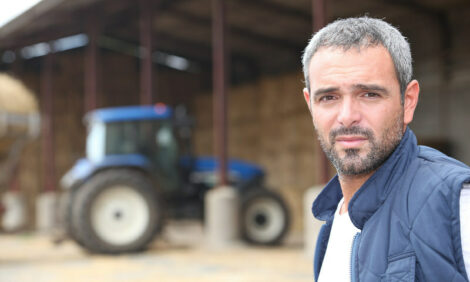



PMWS Disease Investigation Underway
NEW ZEALAND - An exotic animal disease investigation is underway in a New Zealand piggery after weaner pigs failed to respond to veterinary treatment.
 PMWS & PDNS
Technical Zone To the PMWS Technical Zone Sign up for the Mailing list Go to the Discussion Forum |

Allen Bryce, National Manager Surveillance and Response with the Ministry of Agriculture and Forestry (MAF), says the cause of the illness has not yet been confirmed but Post-weaning multisystemic wasting syndrome (PMWS) is a possibility. PMWS has not been found in New Zealand before.
"This is a complex disease and confirming the diagnosis is difficult - it may be sometime before MAF can say conclusively whether PMWS is involved or not. While the investigation progresses a restricted place notice has been put on the affected farm," he says.
"There are no public health or food safety issues associated with this disease which is specific to weaner pigs aged 6 to 12 weeks. While certainly its presence is of concern to the pig industry, it will have a negligible impact on our trade because it is wide spread throughout the world, " he said.
Mr Bryce says the cause of PMWS is still uncertain. Research shows that it is associated with porcine circovirus type 2(PCV2), and the clinical signs can be associated with at least two other pig viruses - porcine reproductive and respiratory syndrome virus (PRRSV) - and porcine parvovirus (PPV). PCV2 and PPV are present in New Zealand. PRRSV is exotic to New Zealand. Diagnostic tests have definitely excluded the presence of PRRSV on the affected farm.
"We are working closely with national and international experts to confirm the diagnosis and the NZ Pork Industry Board has been consulted throughout the investigation," he says.
The disease is characterised by a progressive loss of weight and appetite, pigs have visibly enlarged lymph nodes, and they may experience respiratory distress, diarrhoea, gastric ulcers and jaundice. It can vary in severity and virulence but generally there is low morbidity, and high mortality of affected pigs. There is no known treatment. Overseas experience shows that the disease might spread between pig herds through the movement of pigs, and possibly in semen.
Mr Bryce says the affected piggery is isolated from other piggeries and doesn't pose a risk while the investigation is underway. Management and control options are being explored as part of the investigation.
PMWS is widespread throughout the world; exceptions include Australia and New Zealand.
Questions and Answers
What is Post-Weaning Multisystemic Wasting Syndrome (PMWS)
PMWS is an emerging viral disease of pigs that is being diagnosed with increasing frequency in Canada, the United States, Europe and Asia. Pig practitioners and diagnosticians in several countries began to recognise it in the early 1990's, and Canadian scientists confirmed the disease in a Saskatchewan pig herd in 1996.
What causes PMWS?
PMWS is a multi-factorial disease associated with porcine circovirus type 2 (PCV2), porcine parvovirus (PPV), and porcine reproductive and respiratory syndrome virus (PRRSV). Two of these agents – PPV and PCV2 – are endemic to New Zealand.
How is PMWS diagnosed?
Diagnosis is dependent upon three criteria.
- Presence of compatible clinical signs
- Presence of characteristic microscopic lesions
- Demonstration of PCV2 within these lesions
Has PCV2 been linked with any other diseases?
PCV2 is an important part of the cause of Porcine Dermatitis Nephropathy Syndrome. While PMWS remains the most important syndrome associated with PCV2, this virus has been linked with a number of other syndromes in various parts of the world, including certain types of Congenital Tremor in piglets, nervous disease possibly leading to sudden death in weaners, Proliferative and Necrotising Pneumonia (PNP), perinatal myocarditis, low-grade reproductive problems and possibly Sow Abortion and Mortality Syndrome (SAMS).
How does PMWS affect pigs?
The disease affects eight to16 week old piglets, often peaking at nine to 10 weeks. Clinical signs include loss of condition, failure to thrive, pallor and possible diarrhoea. Some pigs may exhibit breathing difficulties and jaundice.
How is PMWS spread?
It is thought that the disease might be spread through the movement of pigs or possible semen.
Is PMWS very infectious?
PMWS is a syndrome caused by a combination of infectious, pig, and environmental factors. Hence clinical disease is often absent despite the presence of infectious agents.
Is there any treatment for PMWS?
Currently, there is no vaccine to prevent PMWS and there is no treatment. Mortality rates vary between 4 to 10% but farms with post-weaning mortality up to 60% have been reported. Another feature is the persistent nature of the syndrome – some farms are still affected for two or more years and still experience similar levels of mortality.
How widely spread is PMWS
PMWS is recognised as a world wide problem. Australia is free of the disease and although an investigation is underway in New Zealand it has not yet be confirmed.
What can pig farmers do to manage PMWS?
There are numerous important management practices useful for mitigating the spread of PMWS. Veterinarians, producers, industry and government representatives from the European Commission met in September 2001 and put forth "three golden rules" to control PMWS. These were:
- limiting litter to litter contact, both directly, through fostering and multi-suckling, and indirectly from shared needles, equipment, mud, etc.,
- reducing animal stress and susceptibility to disease by limiting exposure to micro organisms, and
- practising good management, hygiene and biosecurity on the farm. These practices are common sense activities, which can minimise the spread of not only PMWS, but many other diseases, as well.
Source: Ministry of Agriculture and Fisheries, New Zealand - 2nd October 2003








